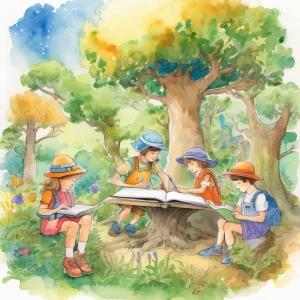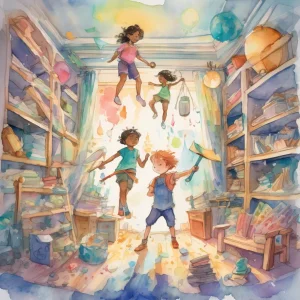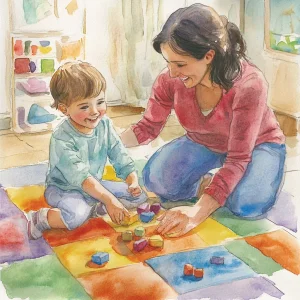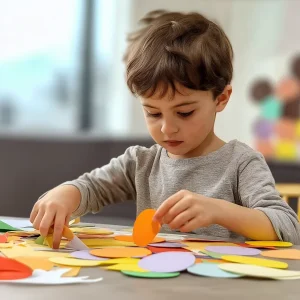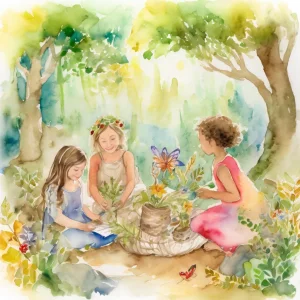Activity
Similar Activities
Sunshine Pizza Delight: Eco-Friendly Solar Oven Party
Children’s Age: 10–12 years
Activity Duration: 35 minutes
The Eco-Friendly Solar Oven Pizza Party is designed for children aged 10 to 12 to learn about sustainability, solar energy, cultural diversity through food, and environmental impac…
Activity Duration: 35 minutes
Enchanted Quest: The Technological Treasure Hunt
Children’s Age: 10–12 years
Activity Duration: 20 – 40 minutes
Embark on the Technological Treasure Hunt for an exciting outdoor adventure that boosts cognitive and language skills in children. Hide clues and tech items in outdoor spots, leadi…
Activity Duration: 20 – 40 minutes
Strength & Art: Household Item Challenge Gallery
Children’s Age: 7–9 years
Activity Duration: 30 minutes
Engage children aged 7 to 9 in a creative strength training session using household items, markers, and paint to promote cognitive and physical development. Set up a safe area with…
Activity Duration: 30 minutes
Enchanted Discovery: Nature Scavenger Hunt with a Twist
Children’s Age: 7–8 years
Activity Duration: 10 minutes
An outdoor educational activity for children aged 7-8 involving a nature scavenger hunt with historical items, leading to a nature collage creation.
Activity Duration: 10 minutes
Nature Scavenger Hunt: Adventure in the Wild
Children’s Age: 4–9 years
Activity Duration: 10 minutes
An outdoor, nature-based activity promoting ecological awareness and cognitive development in children aged 4-9 years.
Activity Duration: 10 minutes
Nature Language Exploration and Journaling Adventure
Children’s Age: 4–12 years
Activity Duration: 15 – 30 minutes
Let's go on a Nature Journaling Adventure! We'll explore nature, practice writing, and learn new words in a foreign language. Grab your nature journal and pencils, and if you like,…
Activity Duration: 15 – 30 minutes
Colorful Objects Sorting Game for Cognitive Development
Children’s Age: 1.5–4 years
Activity Duration: 10 – 15 minutes
This colorful sorting game is designed to boost your child's cognitive skills and nurture their curiosity. Gather safe, colorful objects like blocks or toys from your home. Place t…
Activity Duration: 10 – 15 minutes
Rainbow Caterpillar Creation: A Colorful Adventure
Children’s Age: 6–10 years
Activity Duration: 10 – 20 minutes
In this fun activity called "Creating a Colorful Caterpillar," children can explore their creativity and improve their fine motor skills and understanding of sequencing. To begin, …
Activity Duration: 10 – 20 minutes
Magical Storytelling: Create Together with Friends
Children’s Age: 4–6 years
Activity Duration: 15 – 30 minutes
In the Create a Story Together activity, children will explore their creativity, language skills, and teamwork. Get small pieces of paper, colored pencils, and a container ready. K…
Activity Duration: 15 – 30 minutes
Holiday Textures Sensory Exploration for Infants
Children’s Age: 0 – 3 months
Activity Duration: 5 minutes
Engage infants aged 0 to 3 months in sensory play with this holiday textures exploration activity. Use soft fabrics, textured toys, and optional holiday-scented items in a quiet, s…
Activity Duration: 5 minutes
Dance Around the World: Colorful Cultural Dance Party
Children’s Age: 2–3 years
Activity Duration: 10 minutes
Engage toddlers aged 24 to 36 months in the "Colorful Cultural Dance Party" activity, where they'll dance to diverse rhythms and learn about different cultures through music and mo…
Activity Duration: 10 minutes
Enchanted Forest Tales: Nature Play Theater
Children’s Age: 4–6 years
Activity Duration: 15 – 25 minutes
Engage children aged 48 to 72 months in the "Nature Play Theater" activity, fostering communication skills and ecological awareness. Set up an outdoor performance area with natural…
Activity Duration: 15 – 25 minutes






